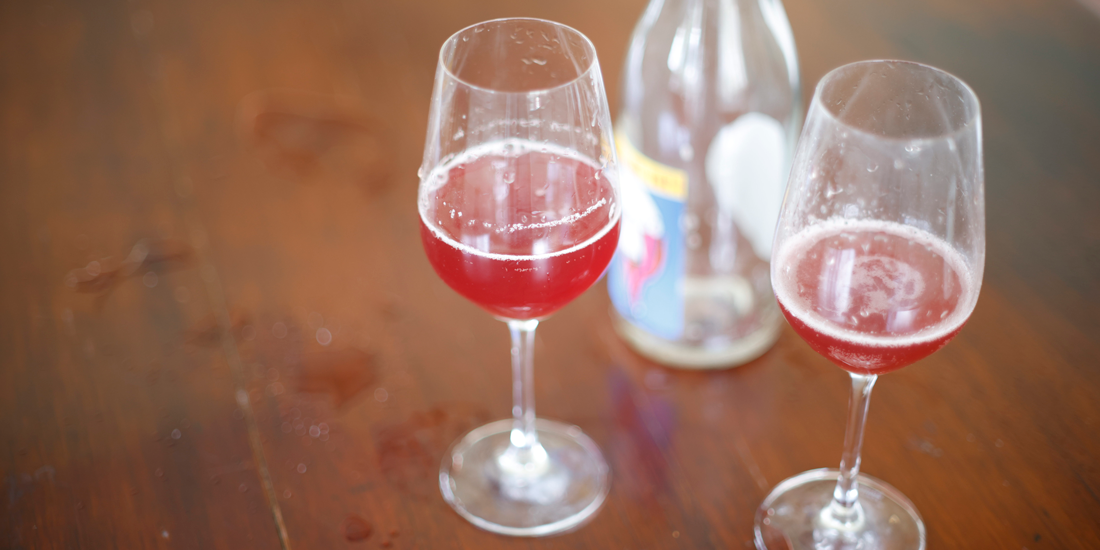
The Drop with Olivia Evans – there ain’t no party like a pet nat party
There is something hypnotising about the moment when a bottle of effervescent wine is opened. It pulls you in as the force of beads rush to the bottle neck, the billowing wash of foam that fills the glass, the delicate hiss of bubbles as they dissolve, ready for the sipping. I’m not one to discriminate when it comes to fizz, whether it be champagne, prosecco, cava or a local sparkling, but none have taken such a hold in recent years as pet nat. Its fresh popularity would imply the wine is a new style, but as we explore its ancient roots, I am assured that pet nat is more than just a trend.
Short for pétillant naturel (natural sparkling), the technique of making these wines is traditionally as méthode ancestrale and the first writings of the bubbly juice date back to 1531. It is believed that the first expressions came from the Loire Valley in France and, like most wine produced from this time, it was a very happy accident. With the intention of making a still wine, they would have been inadvertently bottled with active yeast and sugar remaining in the juice. At a certain temperature this would have reignited the fermentation creating trapped Co2 and therefore, bubbles!
The wines are now made this way with intention, as a fermentation that is trapped half way through and finishes in bottle. As there is still yeast within the juice, you will often find a cloudy hue to these delicious bottles. With the fizz being created naturally, the intensity will vary in each bottle, but generally they create a finer, softer spritz than traditionally made sparkling wines.
A newer demographic of wine drinkers approach the colourful offering of naturally made wines in an open way. It has helped accommodate the stampede of pet nat wines onto the scene. We are now seeing more and more producers experimenting with the style, creating a great diversity of drinks and a generally inexpensive offering, as they are quick to make and provide next-to no ageing. Pet nat wines are definitely a casual approach to drinking fizz. Almost any occasion invites a bottle (or two).
My favourite way to drink them is to pour it out between five or so glasses and get moving to the next drink. It’s a style of wine that requires little thought, a couple of mates and lots of fun. When it comes to food, they are great wines to start the meal with as the high acid and freshness from the bubbles creates salivation on the palate. I’ve also often enjoyed them after a main meal, before dessert, even with cheese. Their lively character acts as a great cleanser.
Pet nat wines can be made from just about any grape variety, so they come in a range of wonderful, vibrant colours and flavours that get the mouth-watering by just looking at them. Rosé pet nat wines often have deep pink shades, but expect them to be dry and juicy. Some are even made with red grapes and are fermented for a long time with their skins, so fizzy reds are another great style to explore! The resulting cloudiness in the wine provides texture, which liken to biting into a fleshy green apple. It brings a balance and crunchiness to the otherwise juiciness of the fruit.
One of my favourite winemakers, Neil Prentice from Moondarra Wines in Gippsland makes extremely tasty pet nat wines. He says, “As long as you’re prepared not to drink with your eyes”. I am starting to think, however, that maybe drinking with your eyes is all part of the fun.
Happy, fizzy, cloudy sipping!
A few of my favourite Australian pet nats:
BK Wines Pet Nat Pinot Noir – Adelaide Hills, South Australia
Das Juice Prosecco Pet Nat – Alpine Valleys, Victoria
Express Winemakers ‘Foamo’ – Great Southern, Western Australia
Moondarra Pet Nat Chardonnay – Gippsland, Victoria
Marion’s Vineyard ‘Lunacy’ – Tamar Valley, Tasmania
ARC Wines Riesling Pet Nat – Mornington Peninsula, Victoria
The Stumble Guide is our comprehensive Brisbane dining guide with more than 2400 places to eat, drink, shop and play.
